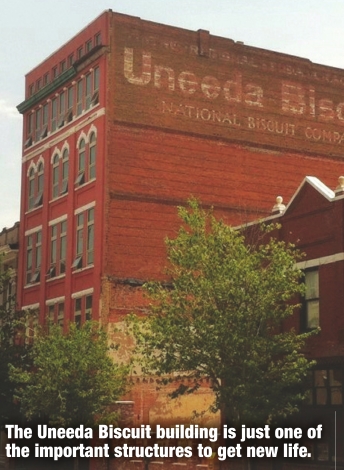Developing History

Legislative Déjà vu – Historic Tax Credits Revisited
 As regular as the clockwork of the legislative session comes the opportunity to share the story of why commercial historic tax credits are something that has made Louisiana stronger and our local communities richer.
As regular as the clockwork of the legislative session comes the opportunity to share the story of why commercial historic tax credits are something that has made Louisiana stronger and our local communities richer.
Each spring we return to Baton Rouge to defend or extend these credits that act as a little bit of risk abatement and that have made remarkable differences in cities from Monroe and Shreveport to New Orleans and Baton Rouge. In a state divided by geography, religion, football team affiliation and political party, the historic tax credit is one of the few economic-development, historicpreservation, urban-renewal programs that has both brought the state’s often-warring factions together and done what it has promised (and more).
When the credit was first introduced in the mid-2000s, it was envisioned as a way to remove a small piece of the risk inherent in rehabbing troubled and often blighted buildings. Many times, these are buildings in the urban core reeling from decades of neglect that are either off the tax rolls or nearly so, creating no jobs and no opportunities, sometimes derelict and magnets for mischief. The old Arlington Hotel on Cotton Street in downtown Shreveport is one; so is the Uneeda Biscuit building on Milam. Several years ago, the former Sears building on Texas Street was in the same category. It was a bricked-up fortress of a building taking up a third of a city block on the prime thoroughfare of downtown. It was empty, sketchy and altogether foreboding. A few years earlier, two other buildings nearby, the one that now houses artspace in the 700 block of Texas and the Robinson Film Center building in the 600 block of Texas, were equally vacant and unproductive. All have now been rehabbed and brought back to vibrant life.
These projects were not done simply because of the tax credits; the rehabs cost far more than the tax credits returned … but the credits did help abate a small portion of the sizeable risk. Notable, too, is that over the years the credits have created a strong catalytic “overflow” effect in the places where they have been used. In the 600 and 700 blocks of Texas in downtown Shreveport in the last 15 years, we have seen $40 million in investment. Seven of the buildings in those two blocks have utilized tax credits, but 17 buildings have been completely or substantially improved.
Ten additional buildings that did not apply for – or get credits – were still made more attractive as investments because of those buildings that did. That’s major investment, and we’re seeing it around the state.
This year, Representative Jim Morris of Oil City is one of the legislators pushing a house bill (HB83) to extend the historic credits until 2026. Because of his work and the efforts of other supportive legislators, buildings like the old Arlington Hotel, Andress Ford, Uneeda Biscuit, Goode-Cage Drug, Commercial National/United Mercantile Bank, Ridgway’s, Hutchinson Building and others will have new names, new uses and productive futures. They will return to the tax rolls and create jobs, opportunities and excitement, joining buildings such as Ogilvie Hardware, United Jewelers, Lee Hardware, Red River Bank, 601 Spring and many others that have made a change in the landscape of our downtown.
Huge strides have been made, but we still have a sizeable inventory of buildings that need both our love and investment. We thank our legislators for giving us a valuable tool to save our historic structures and in doing so, brighten our future.
Liz Swaine is the executive director of the Downtown Development Authority. She can be reached at liz@downtownshreveport.com.
